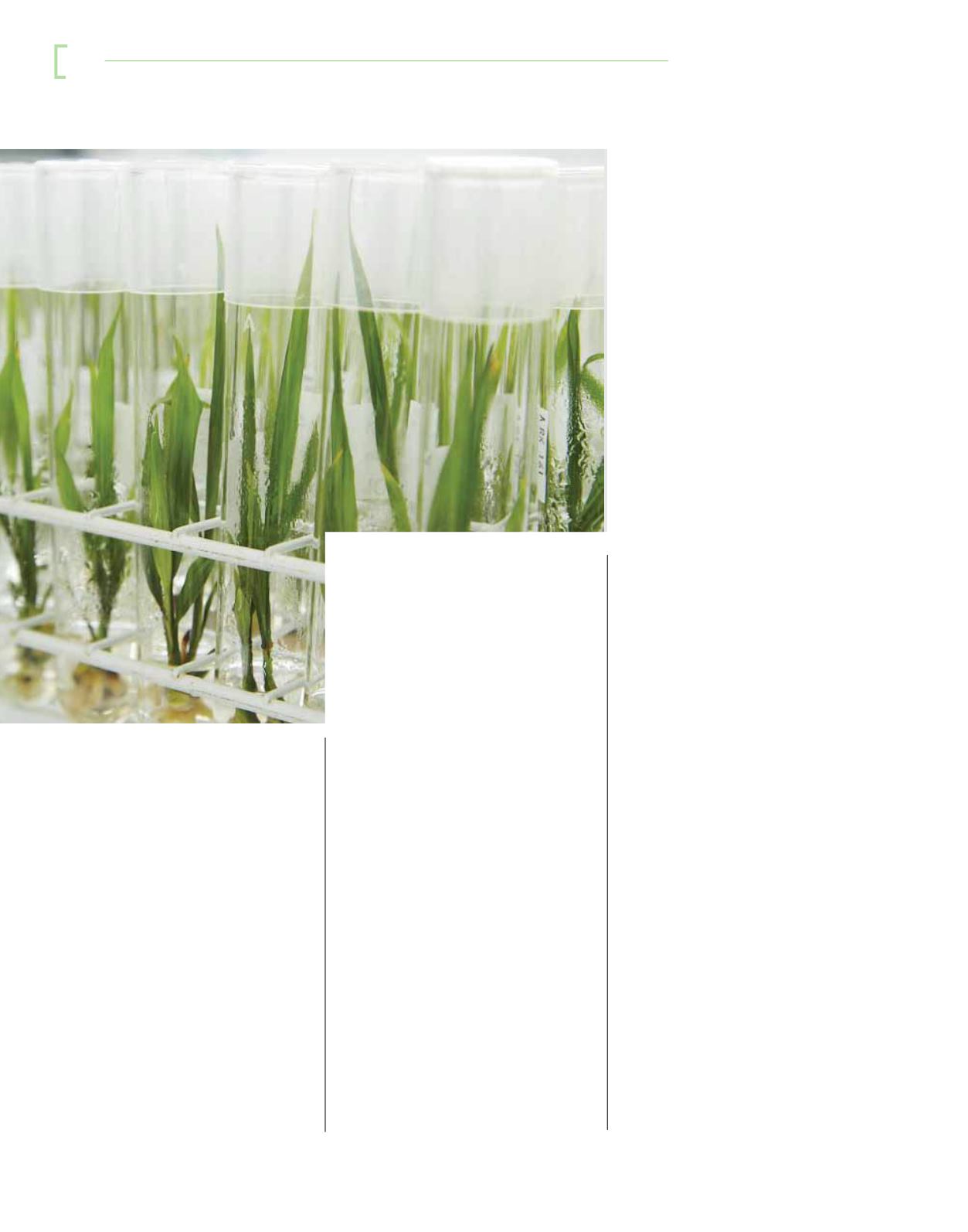
The AA Hybrida IS and AA Hybrida
II candidates have achieved 22% and
34% more oil yield respectively than
our previous AA.
AAR’s Tissue Culture laboratory,
through
its
certified
ISO
management system routinely
produces high yielding ramets
while methodically sustaining its
production quality. Reclones feature
high oil-to-bunch ratios of 34% or
29% OER equivalent.
To date, we have 20,300 ha of oil
palms planted with clonal planting
materials.
In addition, our genomic selection
process allows us expedited
breeding selection by no less than
two years compared with traditional
breeding
methods.
Genomic
selection is a form of molecular
marker selection for quantitative
traits including oil yield.
Improving fertiliser usage efficiency
remains a key focus for our R&D
team in order to provide the best
growing environment that will
promote optimal nutrient uptake
and a reduction of surface run-off
and leaching losses.
Employing the latest geospatial
technology, we are also able to
design
site-specific
drainage
systems for oil palms in addition to
flood control.
AAR has made significant progress
in its study of the correlation
between microorganisms and soil
fertility as well as plant health. The
anticipated benefits from this study
include enhanced palm growth and
better yields derived from beneficial
microbes.
AAR has developed new ways
to capture and study insects,
enhancing our understanding of
the biological diversity within our
oil palm ecosystem. This allows us
to distinguish between insects that
can be beneficial and those that
are pests.
Advances were made in our
on-going research to contain
Ganoderma
disease
through
Ganoderma antagonistic microbes.
One of the candidates discovered
by AAR to deter and reduce
Ganoderma infection, a novel
species, Scytalidium parasiticum,
has been patented.
During the year, we utilised
unmanned aerial vehicles to capture
satellite imagery at higher spatial
and temporal resolutions. We have
been able to utilise these images for
mapping and drainage planning in
our estates.
We have also been able to develop
protocols for use in field assessment
and to detect pest and disease
outbreak. Moreover, the high
resolution images taken are also
used to accurately determine the
planted hectarage and its density,
particularly
over
challenging
topography.
ceo’s rev i ew
Bo ustead plantati o ns Berhad
16


